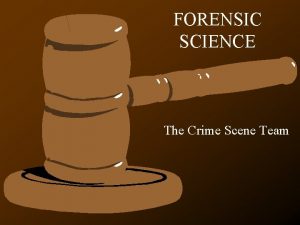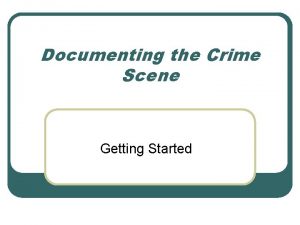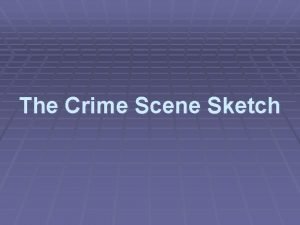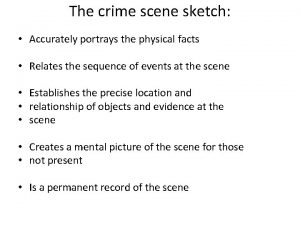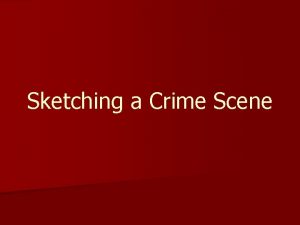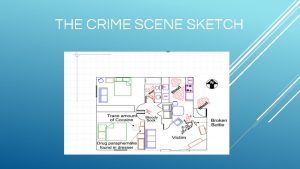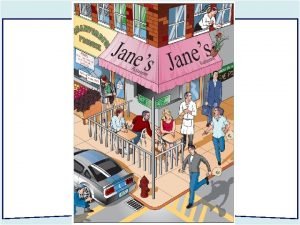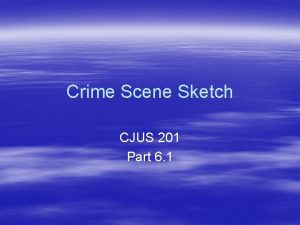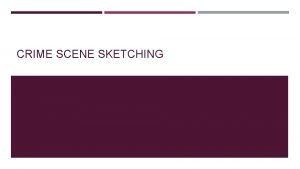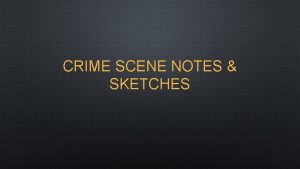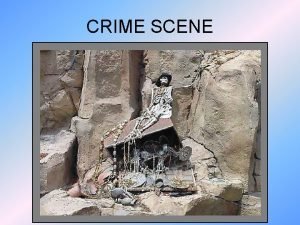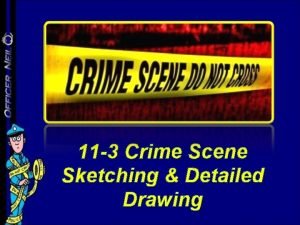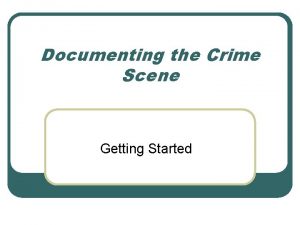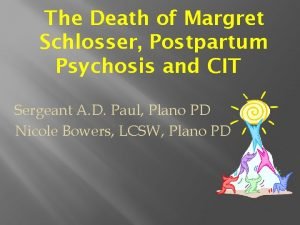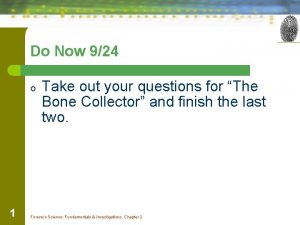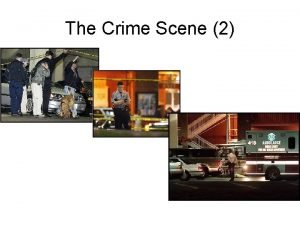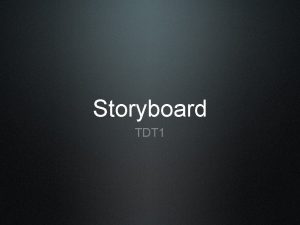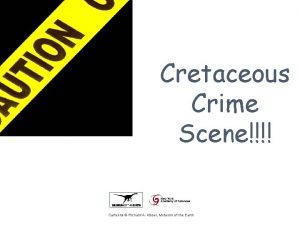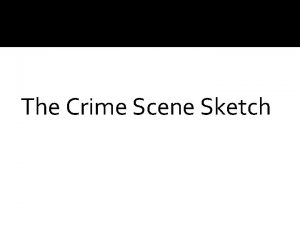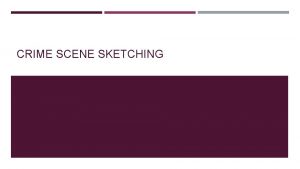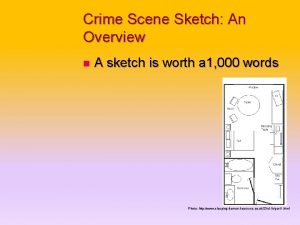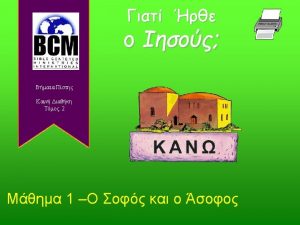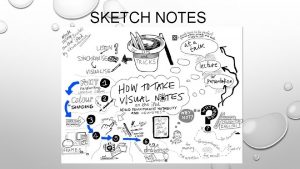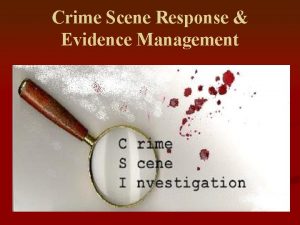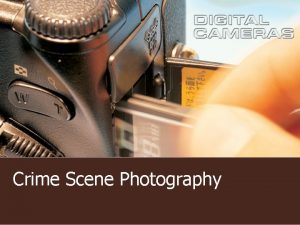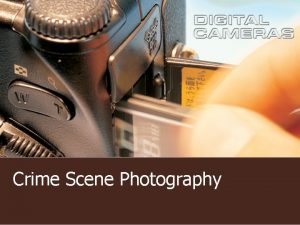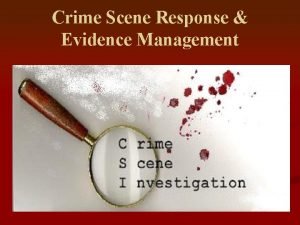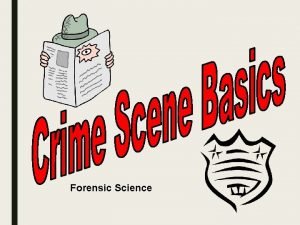Crime Scene Sketch CJUS 201 Part 6 1



















- Slides: 19

Crime Scene Sketch CJUS 201 Part 6. 1

Sketch 1. Advantage - essential details - indicates distance - spatial relationships a. Two types (1) Rough - relatively crude - free-hand representation - all essential information

Sketch - measurements - made at crime scene (2) Finished - more precise - lines clean / straight - typeset / typewritten - prepared at later time - info: rough sketch / notes / photos b. Scale drawing

Sketch - distances precise / proportional - skilled draftsperson (1) Court: exact distances - shows premeditation - run to kitchen to get knife (2) Commercially available - several templates - house / store / office

Sketch c. Measurements important - 2 reasons (1) Reconstruct crime - account given by suspect / witness (2) Clear / precise answers - cannot impugn competence 2. Methods used - evidence location at scene

Sketch a. Coordinate - using walls / fixed points - rectangle b. Triangulation - two lines / fixed points - corners of room - fixed objects outside c. Baseline - straight line / two fixed points

Sketch - measure off line - right angle d. Compass point - fixed point / protractor measure angle - draw lines from that point e. Cross-projection method - opening the room like a box - show floor / walls / ceiling

Sketch 3. More descriptive than words - physical facts - precise locations - relationship - create mental picture - admissible a. Rough sketch - pencil outline - location of objects - not to scale / distance measurements

Sketch (1) Depends on crime scene - large area / room / body - streets / blocks - acres of land - house / garage / swimming pool b. Steps - depends on techniques (1) Observe / plan

Sketch (2) Measure distances / record (3) Outline area (4) Locate objects / evidence (5) Record details (6) Notes: reference to sketch (7) Legend / scale

Sketch c. Materials - own sketch kit (1) Paper – plain / graph (2) Pencil / measuring tape (50’ to 150’) / protractor / scotch tape (3) Ruler / straightedge / clipboard / erasers / compass / thumb tacks

Sketch 4. Photos alone - not sufficient - clarify appearance - easier to understand a. Selective (advantage) - supplement with chart / sketch / diagram - exact location / bits of evidence - relation to other (1) Admissible: aide to court / jury

Sketch - never considered works of art - reasonably accurate / complete b. General rules - all objects bearing on crime scene (1) Entrances to buildings (2) Entrance to room (3) Door: hinges / swing

Sketch (5) Victim to stationary objects (6) Weapon / evidence relative to victim (7) 2 measurements to relocate c. Sketching: 3 types (1) Locality - scene of crime / environs - neighboring buildings / roads / etc.

Sketch (2) Grounds - crime scene / physical surroundings - house with garden - one or more floors (3) Details - immediate scene - where crime committed - details thereof 5. Overview most used

Sketch - cross projection - gain a 3 -dimensional view a. Rectangular coordinates - points measure from two walls - fixed corner / window / object b. Triangulation method - from two fixed points in triangle - corner / window / object

Sketch c. Legend (1) Evidence - blood / knife (2) Furniture - bed / chair (3) Use symbols / numbers / letters

Sketch (4) Compass point - (N) - draw to scale (1 inch = 3 feet) 6. Common errors a. Measure by pacing - expressing results in feet / inches b. Relying on memory - not taking notes at time

Sketch c. Drawing from accurate measurements - furniture: visual estimates 7. Decide beforehand - become familiar with scene a. Nothing irrelevant b. Contains only essentials
 Crime scence investigator
Crime scence investigator Sketch of locality in crime scene
Sketch of locality in crime scene Baseline sketch method
Baseline sketch method A crime scene sketch should include
A crime scene sketch should include Crime scene sketching
Crime scene sketching Crime scene sketch
Crime scene sketch Crime scene
Crime scene Cross projection sketch crime scene
Cross projection sketch crime scene Crime scene sketch examples
Crime scene sketch examples Crime scene notes
Crime scene notes What are the three methods of crime scene recording
What are the three methods of crime scene recording Can a crime scene sketch have probative value
Can a crime scene sketch have probative value Crime scene sketching
Crime scene sketching Sketch all serious crime and crash scenes:
Sketch all serious crime and crash scenes: Dena schlosser margaret schlosser
Dena schlosser margaret schlosser Individual vs class evidence
Individual vs class evidence Seven s of crime scene
Seven s of crime scene Crime scene 2
Crime scene 2 Crime scene storyboard
Crime scene storyboard Cretaceous crime scene
Cretaceous crime scene
